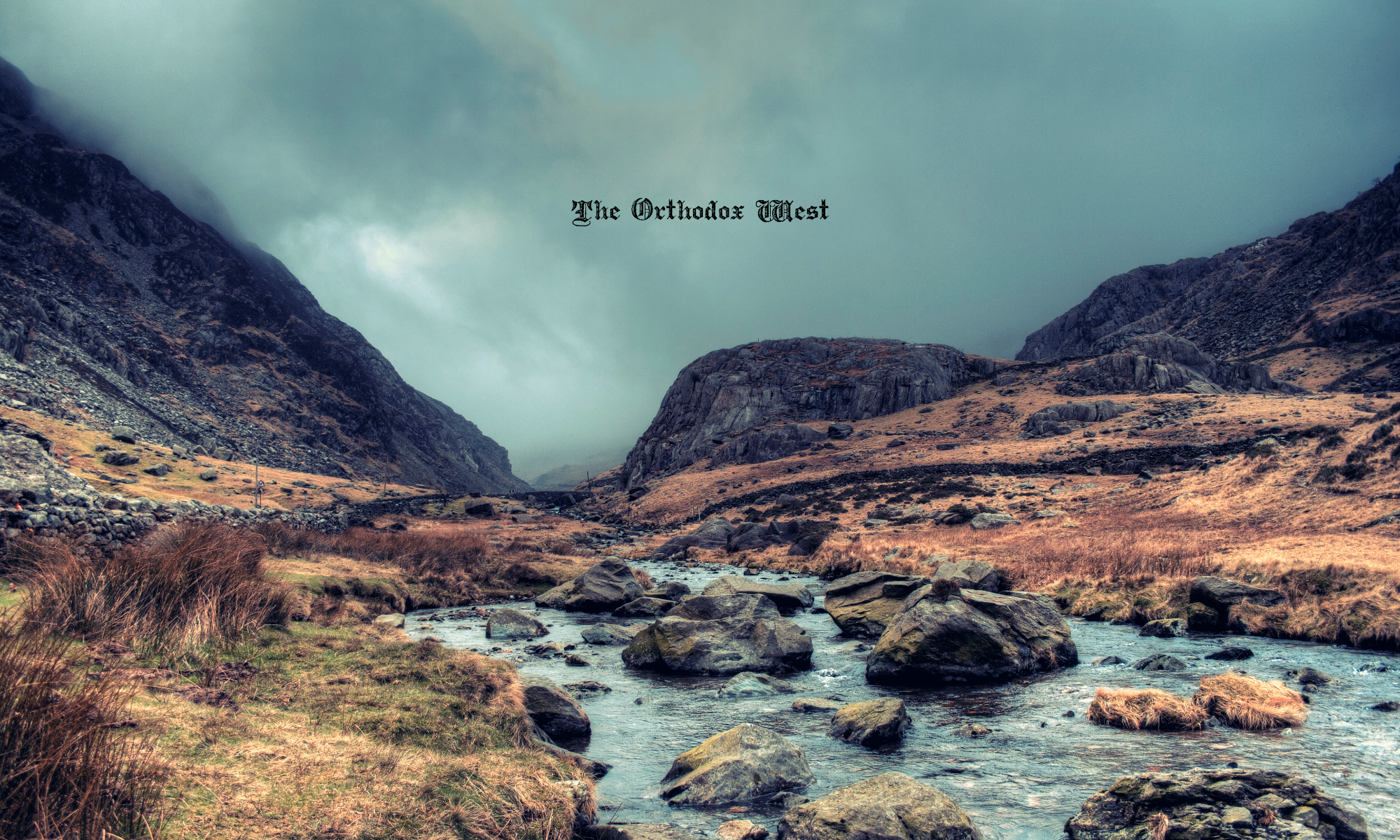Rising above the river Wear is Durham Cathedral (a World Heritage site and according to Bill Bryson, “the best cathedral on planet earth”). On our last trip to England in 2005, we trained up to Durham, but in order to make our other commitments and schedules, it left only an hour and a half to see the Cathedral. We weren’t going to make the same miscalculation this time! As soon as we plunked down our bags, we headed for the cathedral and venerated the relics of St. Bede in the Galilee Chapel (and were allowed to offer very quiet prayers) and then venerated the relics of St. Cuthbert (and likely the head of St. Oswald and possibly relics of St. Aidan) in the shrine behind the High Altar – silence paramount – no vocal prayers allowed.
Sunday we worshipped at the Parish of St. Cuthbert and St. Bede where Fr. Andrew Louth celebrated and preached, assisted by Romanian Deacon Justin and Ecumenical Patriarchate Priest Gregory. Chanters were a Greek surgical student (Yannas) and a young student from Kazakhstan & Moscow – large number of Romanians, but a very pan-Orthodox parish – by intention of Fr. Andrew. He is so soft-spoken I had to cup my ear to hear the excellent homily. Sunday Roast was served in the Cathedral restaurant (beef, Yorkshire pudding, assorted veggies – a feast perhaps not fit for a pilgrim, but certainly for a king) and we tucked in. Met up in the afternoon with Fr. Thomas Cook, the ROCOR priest in charge of the WR parishes in England. We chatted as we took in the Open Treasures museum exhibit of St. Cuthbert’s coffin, pectoral Cross, portable Altar and remnants of vestments. We re-venerated Cuthbert and Bede, and finished in good English style…with tea!

Monday we drove to Jarrow, where the Monastery of St. Benedict Biscop and St. Bede is located. Toured Jarrow Hall (formerly “Bede World”). St. Benedict was Bede’s Abbot, who made six journeys to Rome to collect texts, icons, relics and an expert chanter, John, to teach his choir monks proper Gregorian Chant. The Venerable Bede was a pre-eminent Scriptural commentator and the first historian of the Ecclesiastical History of the English People. There is also a working Anglo-Saxon farm on the premises.




Bamburgh lies to the North on the coast and not far from our next destination: the Holy Island (Lindisfarne). Stopped to visit St. Aidan’s Church, where a beam now set above the Font is said to have been leaned upon by St. Aidan shortly before his repose, and to have survived two fires untouched by the flames. We offered prayers at his shrine in the Church. St. Aidan came from Iona to Lindisfarne at the behest of King Oswald to bring the Faith to the people of Northumbria. He founded the Lindisfarne Priory about 634 and served as its first bishop. Witnessing St. Aidan’s soul ascending to heaven, while keeping his flocks, the young Cuthbert subsequently presented himself to Eata at Melrose to become a monk.
The parish Church was built in the late 1100’s on the site of the wooden one founded by St. Aidan in 635, destroyed by fire when Penda’s Mercians sacked Bamburgh in 651. The Church has a beautiful 19th C stone reredos with images of Ss. Oswald and Aidan having pride of place, and including Paulinus, James the Deacon, Hilda, Cedd, Caedda (Chad), Eata, Finan, Cuthbert, Ebba, Egfrid, Bede, Ceolwulf, Eadfrid, Tosti (Bartholomew) – all great Northumbrians.




Part 3 – Lindisfarne, back to Jarrow, and on to Edinburgh, Glasgow & Iceland
Next week…

